Independent Collectors
Yvonne Roeb
Inside the studio of the artist with the unusual collection.
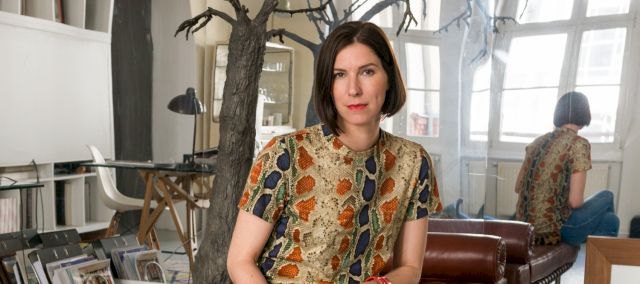
If you are lucky enough to have the studio of Yvonne Roeb in Berlin, you will first encounter a classical sculpture workshop on the ground floor.
Moving up to the first floor, a former dance studio, is a beautiful Berlin loft and it is here that Roeb shows her “Wunderkammer” collection of objects from all over the world. At the same time, the 150 square meter apartment serves as a showroom for her sculptures before they go to exhibitions or private collections worldwide. Here, Julia Rosenbaum speaks to Yvonne Roeb about the process behind her work, the most peculiar items in her collection, and how the Star Wars trilogy changed her life.
JULIA ROSENBAUM
Let us start at the beginning: How did you first get into sculpture?
YVONNE ROEB
I started painting as a young woman and when I was in the first year of my academy I came to sculpture. Initially I wanted to get out of two-dimensional work and I noticed that I had always missed three-dimensional.
JULIA ROSENBAUM
You are a sculptor who creates and experiments with your hands. How important is the process for you and your work?
YVONNE ROEB
For me, the most important thing is the elaboration and the process leading to the finished sculpture. It is always an intimate, long and exciting journey with new techniques. I always try to learn from other disciplines that I then use in a different way.
JULIA ROSENBAUM
What materials do you normally work with?
YVONNE ROEB
First and foremost, I have to think about the material for each sculpture. There is always only one, final, correct picture for me and it is then that the corresponding solution must be found. Different materials fascinate me, but I do also use classical and traditional materials such as clay, plaster, wood or metal. I also like to experiment with modern materials and combine different techniques to achieve new effects. When treating the surfaces I am a bit of a nerd! This process can sometimes last forever until I find it perfect.

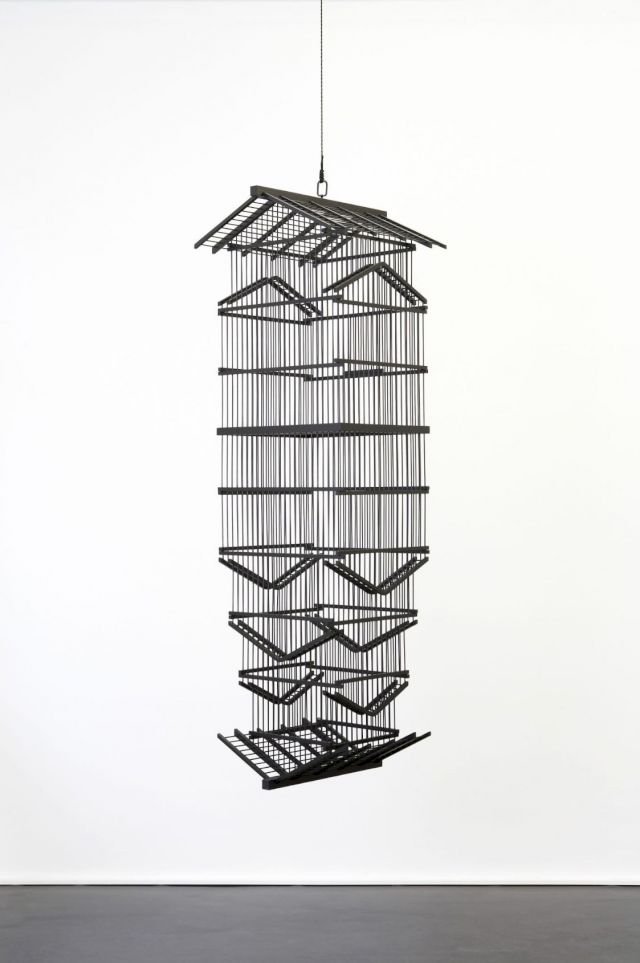
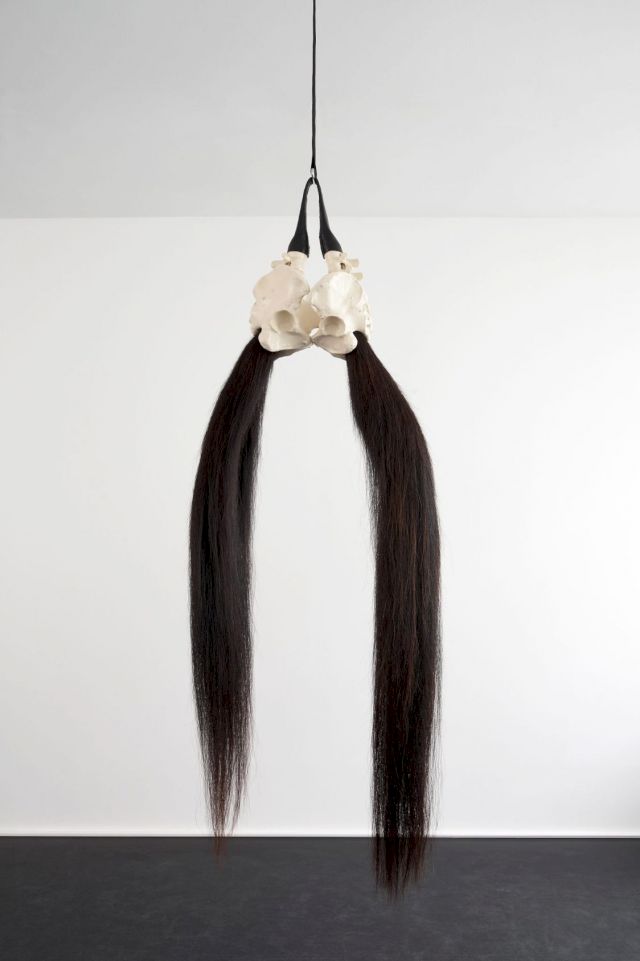
JULIA ROSENBAUM
Your sculptures are often hybrids of human beings and animals and the unconscious, dreams, myths and legends play a big role for you. Where does the fascination for this world come from?
YVONNE ROEB
That is hard to say. I will try to explain it by the Star Wars saga. This is peppered with many references to philosophy, politics, religion, history and mythology. Many of these levels are not immediately perceived when they are merely witnessed; nevertheless, most people develop a fascination for these stories.
They are full of images and characters as a metaphor for the experience of life, without remaining in the pure division of good against the evil. It is rather a complex image of society and its modes of action, all of which have their actual origins in up to 3 000 year old legends. One can therefore assume that Star Wars transported warning examples of behavior, ethics and morality, but made it accessible to a new generation through its appearance. To make this happen, one does not need to know that the thoughts of Joseph Campbell or the psychological theories of C.G. Jung influenced many characters in films. As a sculptor, I may be looking for a form and a likeness to the symbolic, thereby subtly conveying content.
JULIA ROSENBAUM
Do you think it helps if the collector interested in your work already has knowledge into these topics, or do you enjoy leading people into your world?
YVONNE ROEB
Well, in general I guess a little bit of sensibility is needed to be open-minded. People often tell me, that they have no idea about art. I always answer them that there is nothing to understand about it, rather to just to be curious. It is good, if someone has knowledge. They might see deeper parts of a work and can combine it with their precognition of another fields they have experienced, because everything is linked together.
A sculpture, however, always has to function by itself, without anything else that matters around it. To look free and innocent at an object can be a wonderful moment, and if this moment triggers a communication, then I would call it a perfect moment.
I think it is always necessary in life to be awake, hungry for awareness and have a sense of spirit. This is what makes our existence interesting and diverse in the end.
JULIA ROSENBAUM
You have a deep confidence in your intuition. Have you ever been misled by your gut feeling?
YVONNE ROEB
No. It is true that I listen to my instinct. Basically when you learn to listen to your inner voice you cannot be wrong. In the second step, the concrete thinking, the refining, the precise setting is about making statements and evoke feelings. Subconscious things are difficult to formulate. Nevertheless, it is accomplished by juxtaposing dreams with scientific ideas or by taking current social tendencies into account and incorporating them into the work.
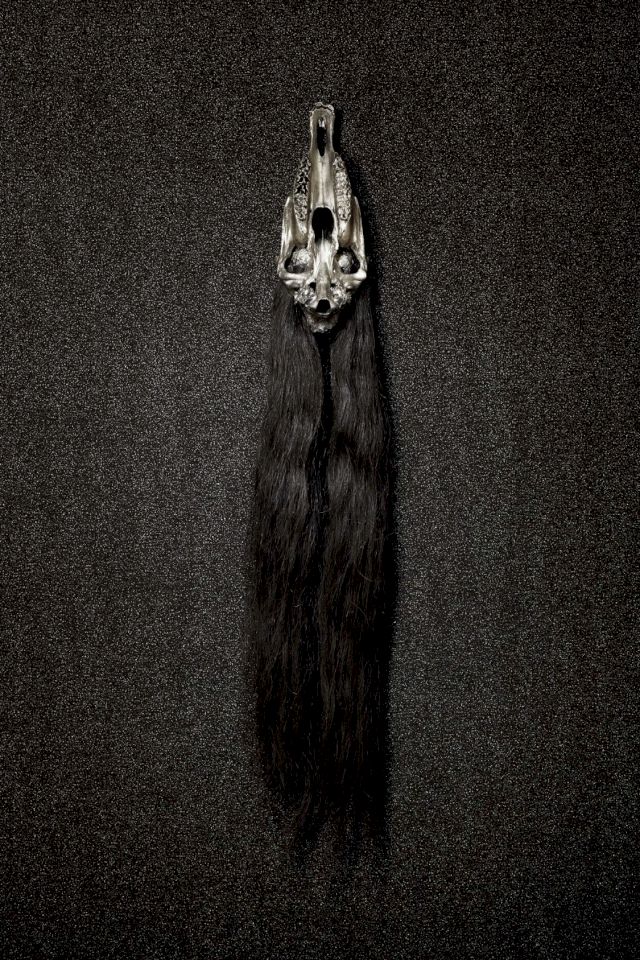
I think it is always necessary in life to be awake, hungry for awareness and have a sense of spirit.
YVONNE ROEB
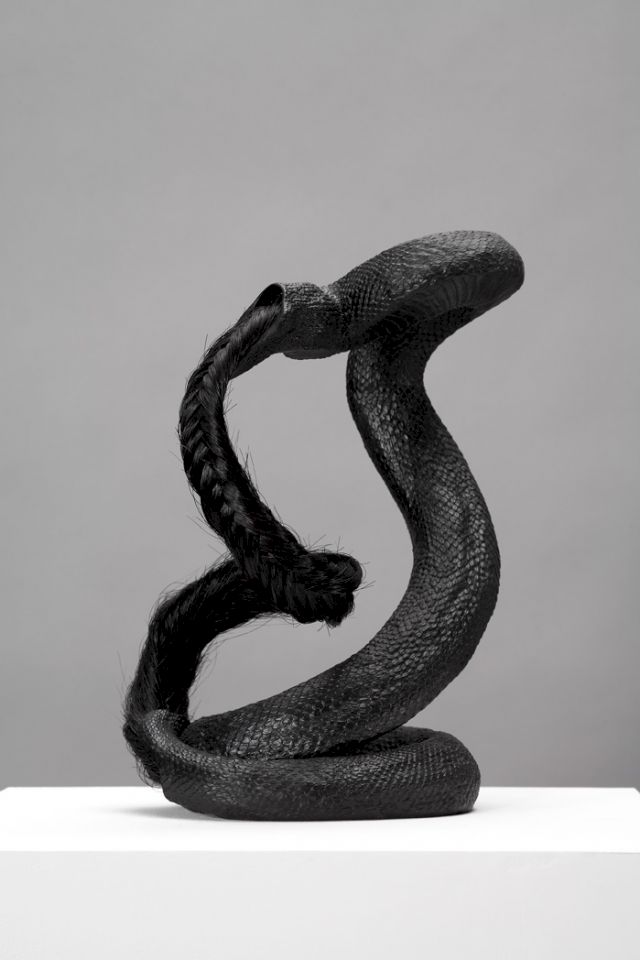
JULIA ROSENBAUM
Your sculptures show the balancing act between science fiction and cultural history. In which area are your role models or inspirations?
YVONNE ROEB
I grew up with cultural history. When I was child and I came to a new city with my parents – we visited museums, churches, architecture and its interior. My parents were adventurous. Encounters with new architecture had a very strong impact on me and the aesthetic worldview. But one is always a child of ones time. This also means that fictitious, forward-looking things will always play an important role. I think you have to work out the tradition in order to create new things. The story serves only as a plateau from which the artist develops further and goes their way. There are no single sources for my work and I find that the mind of a person always perceives much more than they are actually aware of. As an artist, you learn to read this phenomenon and how to use it as a tool.
JULIA ROSENBAUM
How important is it for you to have a personal relationship with your collectors?
YVONNE ROEB
This is very important to me. I always like to get to know the people who want to know more about my work and me. This is not meant in a narcissistic way. It is much more interesting for me to find out what they are searching for, what approach they have towards life and what keeps them moving.
I believe that there is always a reason for every action. I am a person who questions everything. Being in a dialogue always expands the knowledge and the understanding and in the end it is enrichment for the collectors and for me. A vice versa experience, I would say.
JULIA ROSENBAUM
Do the collectors influence what you create? And if so, to what extent?
YVONNE ROEB
My work is very focused and somehow private and complex at the same time. I work a lot with my dreams, my instincts and talk about the inner demons. I guess it would not be possible to do so, if my orientation would go far outwards. It is more like this: collectors love my work because they feel touched. They also share a special feeling that I have experienced and recognize in themselves. Often there are not the right words for art. It’s like speaking a difficult, hard-to-understand language. But if it comes to feelings and if the collectors are able to sense them, they want to dive deeper.
The character of the object should have a strong identity and if it dominates the environment, even better.
YVONNE ROEB


JULIA ROSENBAUM
What does it feel like to see your works within the context of a collector’s home? Has there ever been the occasion when you did not like their method of exhibiting?
YVONNE ROEB
Actually I cannot remember a time that I didn’t like an installation within the context of a collector’s home. I often know the environment where the work is going to be installed and have this in my mind while making a concept for the place. And if I do not know the environment, at least I receive images of it for a better understanding.
But my work can be placed wherever, because it always stands for itself. I have no doubt that even if a sculpture of mine is located in a bathroom, in a walk-in closet or in a cellar, on the ground or if many different things surround it, it is strong enough to have its own power. Always!
JULIA ROSENBAUM
You have been a master student of Katharina Fritsch at the Academy of Fine Arts in Münster. What approaches that you learnt with Katharina Fritsch are still relevant in your current practice?
YVONNE ROEB
As students, we were fortunate enough to learn about mold making and the foundations of classical sculpture. Katharina Fritsch then introduced this discipline to the academy and developed it. I am still modeling every sculpture in clay today, and then I build the molds, pour them out, and treat them with different methods from polyester to bronze.
JULIA ROSENBAUM
In early 2017 your solo exhibition “Bestiarium” was presented in the Hetjens Museum in Düsseldorf. The museum is devoted exclusively to ceramics and has recently shown works of contemporary art. Does it have a special appeal for you to present your work not in the White Cube but in contextually different spaces?
YVONNE ROEB
As an artist, one is encouraged to deal with the surroundings and the exhibition space. As soon as a sculpture is placed in any space, it immediately references it. Thus there is an automatic dialogue. But I find it crucial that a sculpture works equally well in a white cube or in a different museum context, as well as in the real environment, leading up to a chaotic environment. This is an important prerequisite. The character of the object should have a strong identity and if it dominates the environment, even better.
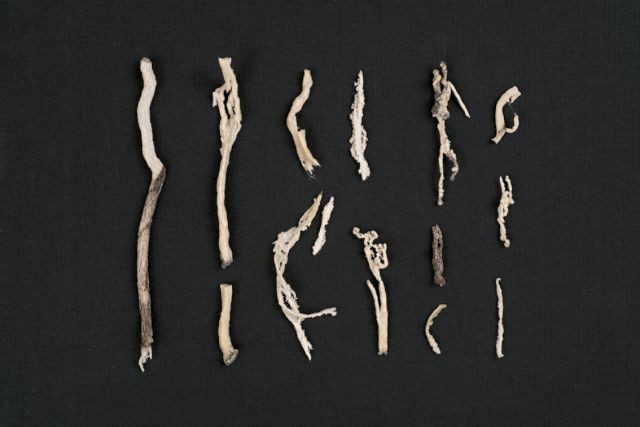
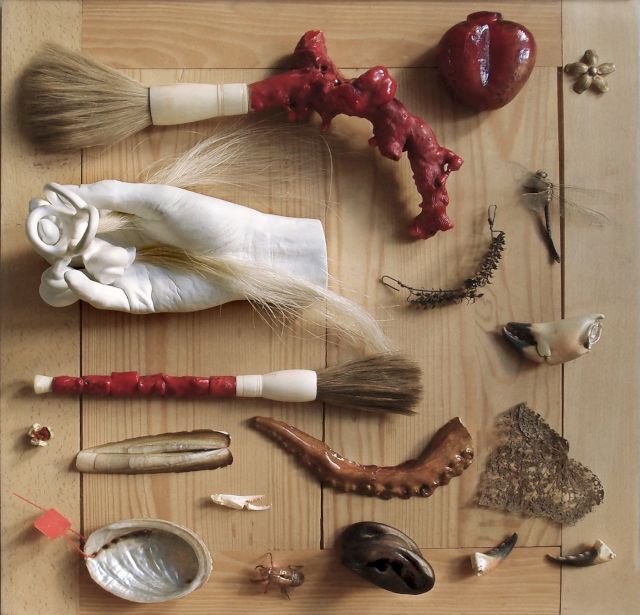
JULIA ROSENBAUM
You were invited to the Balmoral Castle for a residency program. The scholarship is always accompanied by an exhibition at the Arp Museum. Do already have specific project in mind or will you develop your ideas whilst working there?
YVONNE ROEB
No, in this case I do not have any particular project in mind. First of all, I have to let the environment work for me. Everything has to do with everything for me. For me there is also not the general processing of projects, but the projects arise from an inner constitution, which is paired with current topics. Of course they cannot be foreseen. In this case, I am lucky enough to be able to work with a ceramic company and since I am always very self-sufficient, I have to lead discussions with the manufactory to find out what is possible.
JULIA ROSENBAUM
Let’s talk about your “Wunderkammer” collection – can you tell us a bit about it and how you decide what goes into it?
YVONNE ROEB
I have found most of the pieces during my travels and brought them back from all over the world. No matter where I am, I love to go to flea markets, look in old book stores, stroll about in little side alleys and dusty antique stores in order to find strange or typical things of the region, which I have never seen before. I guess I am very open to find, what I have never looked for and I just know what I am searching fo when it is right in front of me.
This explains why I do not have a typical concept, like other collectors.
Some pieces function like sketches for my own work afterwards. I live with my “Wunderkammer” objects every day. This brings a constant confrontation with the objects, which can lead to new processes and new fields of interest.
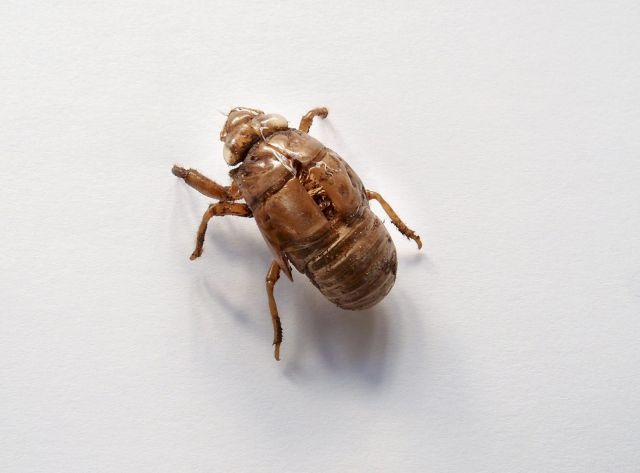
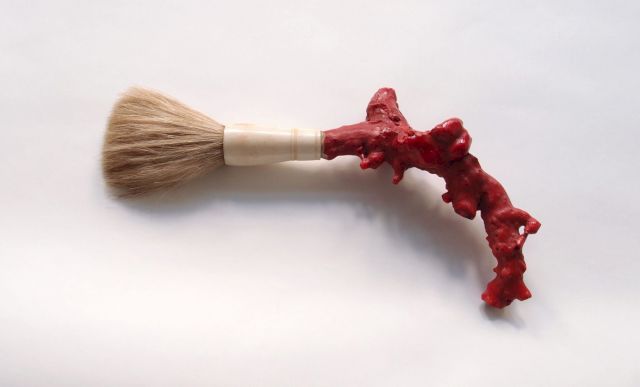
JULIA ROSENBAUM
What’s the strangest piece in your collection that you are proudest of?
YVONNE ROEB
One piece I really like is an armature of a bug that I found while climbing through the Bolivian rain forest. It was stuck at the bark of a giant tree. The shell has an open slit at the back and through this hole, the bug squeezed his body after his metamorphosis. This is a very beautiful symbolic gesture and this is the left over of a life-sustaining process. Things like this fascinate me.
Another piece I really like is a stick from Africa. It is cut out of a bone and has sharp ends along its two sides. I have no idea, if there is a word for this item, but the Massai use it to fight against big cats. The stick must be bravely placed between the mouth of a lion in order to inactivate his bite. I also found a beautiful, antique, red coral in South Korea. Its shape looks like a gun. A brush was added to it and former used for calligraphy.
Minerals and ammonites are of course also part of my collection. Not to forget the fulgurites, which I have created myself with high voltage. They are so rare to find, that I had to re-enact this process on my own. For this project a lot of technical help from scientists was needed.
Sometimes it looks that there is no difference between a found object and my own work.
JULIA ROSENBAUM
You live and work in Berlin and Düsseldorf. Is your life enriched by working in two different places? And what, in your opinion, is the difference between both art scenes?
YVONNE ROEB
I’ve been living in Berlin for almost fifteen years. It is a city that I love very much and which I find incredibly creative and enriching, not least because many international colleagues live and work here. Düsseldorf is also important to me as I lived there right after my Abitur. The Rhineland has a very traditional cultural landscape and many German artists come from the academy in Düsseldorf. There are also many important museums with a distinctive scene which I find to be a great quality.
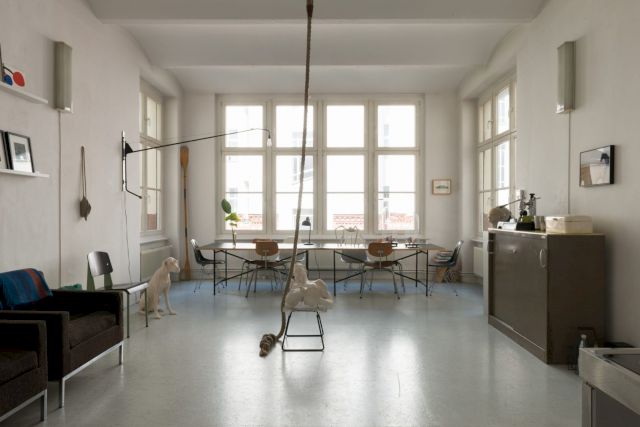
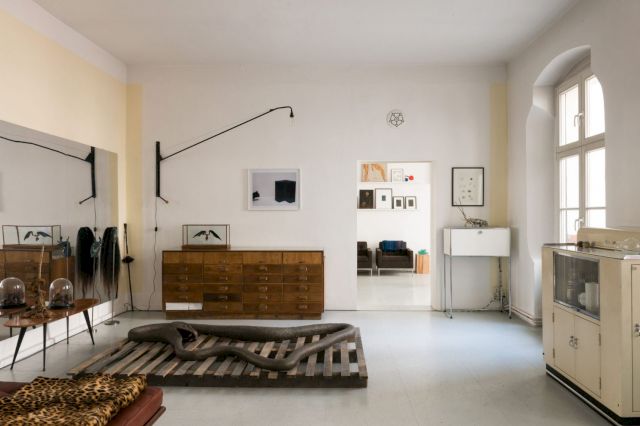
Curated by Julia Rosenbaum, Studio Visits offers an exclusive and independent journey into the world of artist’s studios. First-hand studio tours focus on personal dialogues revealing artistic insights from the very beginnings to the end result; to help understand the artists’ creative process, inspirations and challenges.